What is Shutter Speed ? and what does it have to do with freezing or motion blur?
One hurdle for novice photographers is understanding the elements that control the brightness or darkness of an image (exposure) – ie aperture, shutter speed, and ISO.
Not only do you need to develop knowledge of each individual element, but you also need to understand how they work together to create an image of good brightness.
But understanding how these settings work together is a more advanced topic, which we'll cover in another article. This is in a nutshell a basic introduction to these three settings:
- Aperture controls the amount of light entering the lens and is responsible for the depth of field.
- Shutter Speed determines how long the camera sensor is exposed to light and is responsible for how movement appears in the image, this is what we will see now in this article.
- ISO determines how sensitive a camera's sensor is to light, while also being responsible for how much digital noise appears in an image.
When shooting in Auto Mode, the camera takes charge of adjusting all these settings automatically, the only thing required of you is to press the shutter button.
However, if you want to create some creativity in your photos, you will go to the manual modes, where you can adjust one or all of these settings. So if you are a creative buff, you must master the use of these settings together.
This article will focus specifically on Shutter Speed to see what it does and how to control it. Make sure you read the article to the end, and I guarantee that you will never get confused about this topic.
What is the shutter speed?
There is a curtain in front of the camera sensor that blocks the path of the light, when you take a picture, the curtain opens to allow the light to reach the camera sensor. Shutter Speed is the amount of time this curtain is open to take a photo.
The simplified definition of Shutter Speed is the length of time the camera sensor is exposed to light.
Before you start practicing setting different shutter speeds on your camera, you must know the number of shutter speed digits in order:
How do you adjust the shutter speed on the camera?
When the camera is set to “Auto Mode”, shutter speed and all other settings are determined by the camera and without your intervention. But if you want to set it manually if necessary, two modes work:
• By setting the camera to “Sutter priority mode”, denoted by S or TV, on the mode dial at the top of the camera, which allows you to set the Shutter Speed, while the aperture is set automatically by the camera. As for the ISO, you can choose to Adjust it manually or automatically.
After selecting the mode, you must choose the appropriate Shutter Speed for the scene you want to shoot, by rotating the other dial on the back right of the camera near your thumb, (some cameras have this dial on the front of the camera, check your camera manual), which on the LCD screen shows you different shutter speeds to choose from.
• By setting the camera to “Manual mode”, denoted by M, you can manually choose Shutter Speed, aperture, and ISO.
How is Shutter Speed measured?
Shutter speed is measured in milliseconds, such as 1/250th of a second, 1/2000th of a second, etc. On some cameras, the fastest shutter speed is up to 1/8000 of a second, and the slowest speed is 30 seconds on most cameras.
These speeds can be extended to minutes or even hours, using the so-called Bulb mode, which is denoted by the letter B in the camera menu system.
Bulb Mode
Photographers often get frustrated with the 30-second shutter speed limit on most cameras. What they may not realize is that there is an easy way around this limitation, Bulb Mode is the solution.
This mode keeps the shutter curtain open for long exposure capture, as long as you hold down the shutter button.
Where is Bulb Mode on the camera?
It is easy to check if the camera has Bulb Mode. Switch the camera to Manual Mode, by rotating the mode dial at the top of the camera to M, and shift the Shutter Speed for as long as possible. Normally, it's 30 seconds, the camera will display the letter B after 30 seconds. This is your Bulb Mode!
How to use Bulb mode?
Bulb mode keeps the shutter curtain open as long as you hold the shutter button, meaning if you hold the shutter button for 4 minutes without lifting your finger on the button, the shutter curtain will remain open for 4 minutes. That is, you used Shutter Speed for 4 minutes.
But, it would be impossible to keep a finger on the button to get exposure for minutes or hours, so what can you do about it?
To get a long shutter speed or in other words a very long exposure. Bulb mode is usually used in conjunction with a shutter release device.
You can get this device for about $10 for most DSLRs on Amazon. It is simply a remote or wired control, which allows the photographer to lock the shutter button to take long exposures, without actually standing up and pressing the button.
If you are interested, I recommend AODELAN or RC-201DC2
How do you use this device?
If you want to take a picture with Shutter Speed 5 minutes, for example, when you press the button on the device above, the camera starts taking the picture, until the five minutes are up, then press it again to release the shutter.
How do you find Shutter Speed in the camera?
If you are not shooting using flashlight mode, and you choose Shutter Speed from the speeds on the camera, the way Shutter Speed is indicated is simple, if the Shutter Speed is a fraction of a second, most cameras only show the denominator. If you are shooting with 1/125s for example, 125 will appear on the rear screen of the camera, as shown in the image below.
If you select 15 seconds or more as Shutter Speed, it is often followed by a double quotation mark or an s such as “15 or 15s.” This means the shutter will remain open for 15 seconds. See the picture below.
What is the effect of Shutter Speed on the photo?
Shutter Speed has two main effects; The exposure of the image or in other words how bright or Exposure is, and how the movement appears in the image. Let's dig deeper into these two influences.
Shutter speed and exposure
Shutter Speed is one of the three elements that affect how an image is illuminated or darkened, meaning that it affects exposure.
If you choose a slow shutter speed such as 10 seconds, this means that the shutter will remain open and allow light to pass into the sensor for 10 seconds.
If you don't set the aperture to a small aperture, or lower the ISO value to reduce the light the shutter has let through, you'll end up with a very bright image.
Whereas if you choose a Shutter Speed as fast as 1/1000 of a second, if you don't set the aperture to a large aperture, or choose a high ISO to compensate for the little light the shutter has let through, the image will be too dark.
Shutter Speed, as mentioned earlier, is one of the three settings that affect exposure along with aperture and ISO. If you previously specified a shutter speed appropriate for the scene you want to photograph, but the result did not like it, as the final image is dark or bright, and at the same time you do not want to change the shutter speed you chose, you can expand the aperture or increase the ISO or vice versa.
note:
Lowering the Shutter Speed, for example, from 1/100s to 1/50s, means that the amount of light entering the camera increases while raising or accelerating the Shutter Speed from 1/50s to 1/100s reduces the amount of light in half.
Shutter speed and how movement appears in the photo
The second and most important effect of shutter speed in photography is movement.
With a slower or faster shutter speed, you will be able to either freeze motion or motion blur.
• Freezing Motion
Canon EOS 80d 50mm Aperture f/3.2 Shutter Speed 1/1600s ISO100
If you want to freeze the motion of an object or object, you need to use a Shutter Speed that is much faster than the motion occurring in the scene you want to photograph.
The faster the subject you want to shoot moves, the more Shutter Speed you need. For example, photographing an eagle flying up close would require 1/2000th of a second or higher. Whereas a person who rides a bicycle may only need 1/500th of a second.
• Movement direction affects Shutter Speed
In the image below, since these guys aren't running toward the camera, we'd need a faster Shutter Speed to freeze their movement, say 1/1000 of a second.
Canon EOS 80d 85mm Aperture f/4 Shutter Speed 1/1000s ISO400
However, if these people are heading towards the camera as in the image below, to immobilize them; Shutter Speed can be used slower than that used when shooting them running in the other direction, eg 1/500th of a second.
Canon EOS 80d 85mm Aperture f/2.8 Shutter Speed 1/500s ISO100
• The distance between the camera and the subject affects the shutter speed
The distance the camera is from the subject also affects the speed needed to freeze motion. The closer the photographer is to the subject, the faster the Shutter Speed is required, because the movement of the subject will become clearer with the approach.
This applies to the focal length of the lens you're using as well – you can use a slower shutter speed with a wide-angle lens than you can with a telephoto lens, meaning the closer you are to your subject the faster you need Shutter Speed because the movement of The subject is also more visible when a telephoto lens is used.
We suggest you suitable Shutter Speed to freeze motion for some moving targets :
- Young woman walking around the park: 1/125s - 1/150s
- Baby running: 1/500s - 1/1000s
- Animal running: 1/1500s - 1/2000s
- A bird that flies: 1/800s - 1/2000s
- Moving car: 1/500s - 1/8000s
important information :
The most common thing we associate with Shutter Speed is camera shake. The longer the shutter is open, the greater the chance that your shaking hands will cause obvious blurring of the image.
To avoid this problem, the shutter speed rule states that you should not use a Shutter Speed slower than the focal length of your lens. I will explain more:
If you're using a 300mm lens, make sure your Shutter Speed is faster than 1/300 of a second, i.e. 1/400 or faster. And if you're shooting with a 70mm lens, your Shutter Speed should be 1/70th of a second faster, and so on.
Therefore, the closer you are to your subject, in other words, the longer the lens, the higher your Shutter Speed should be.
For example, if you are shooting with a 300mm lens, and Shutter Speed 1/50 of a second, in this case, you should use a Tripod or Stabilizer. It is difficult to avoid blurring the image because Shutter Speed is much slower than the length of the lens or Focal Length.
• blurring motion
If freezing motion requires a fast shutter speed, motion blur, or in other words showing motion in the image requires a slow shutter speed.
In the image below, a speed of one second may be sufficient to obtain light paths.
Canon EOS 80d 50mm Shutter Speed 1s ISO200
But wait, is blur always a bad thing???🤔
• Movement isn't always bad
Sometimes, showing movement in a photo is a good thing. For example, this effect is used in advertisements for cars and motorcycles, to convey a sense of speed and movement to the viewer.
Canon EOS 80d 100mm Shutter Speed 1/15s ISO100
When you take a picture of a waterfall or seascape, you want to show how fast the water is flowing.
Canon EOS 80d 35mm Shutter Speed 10s ISO100
When you take a picture of a racing car, you want to give it a feeling of speed.
Canon EOS 80d 150mm Aperture f/14 Shutter Speed 1/80s ISO100
Photographing a star scene to show how the Earth rotates and the positions of the stars change.
In all of these cases, choosing a slow Shutter Speed will be the way to get those great photos.
The problem with using slow shutter speed is that you can't effectively hold the camera in your hand, and get clear and sharp images like the ones above, but don't worry Tripod will solve the problem.
Once the Shutter Speed slows down to about 1/60s, you'll need to prop the camera up with something other than your hands.
Creative uses of different shutter speeds
Motion Blur photography
To create a creative blur, you'll need some equipment; A remote control to take a picture without touching the camera to avoid shaking, and a tripod to hold the camera, then you can play with the Shutter Speed settings.
This can create interesting images, in which opacity is the main point of interest. For inspiration, try shooting the fairgrounds with Shutter Speed 1s or 2s as pictured above.
The moving subject looks fixed and the background is blurry
To get this creative effect, you have to move the camera to track your moving subject, and you will get an image where the background is blurry but the subject is sharp, as shown in the image above.
This shot was taken using a slow shutter speed, tracking the subject by moving the camera. The feeling of movement is evident thanks to this technology.
The right settings to capture this creative effect:
- We recommend setting the camera to Shutter Priority mode (S or TV). In this mode, you will set the shutter speed manually, while the aperture will be set automatically.
- Select Shutter Speed, 1/40 or 1/80 will do.
- Set the camera to continuous shooting. Meaning that when you press the shooting button, the camera will take many photos per second instead of one, and the number of photos depends on the type of camera you have, after cameras take 6 photos per second, some may reach 14 photos per second ... etc.
- It's highly unlikely that you'll get the great shot you want if you only take one photo. You will need to take many pictures and then pick the best one from among them.
- Make sure to follow the motion line of your moving subject when shooting. The point of this is to keep it stable in the frame and to allow everything else to move.
light painting
A long shutter speed (5 or 10 seconds) along with moving the light allows you to add “graphics” to the image as in the image above.
Photographing the explosion of a balloon filled with water
Canon EOS 80d 50mm Shutter Speed 1/4000s ISO100
Photography is all about capturing the right moment, just like the balloon burst pictured above.
Capturing this picture requires a very fast Shutter Speed (1/4000 or more), as well as the Continuous Shooting that we explained earlier.
underwater photography
For underwater photography, you need a fast shutter speed. I usually shoot this at 1/8000 or 1/4000 of a second, because I want to capture the moving wave, and I want to make it look frozen in the image.
Conclusion
Now that you've read the article and checked out some Shutter Speed examples, the best way to understand what Shutter Speed is in photography, and how it works, is to put all that knowledge into practice!
There is no end to the interesting effects you can create by changing your Shutter Speed. Don't be afraid to experiment or use settings you usually avoid, you never know when you'll find a way to bring a new perspective on a common topic.

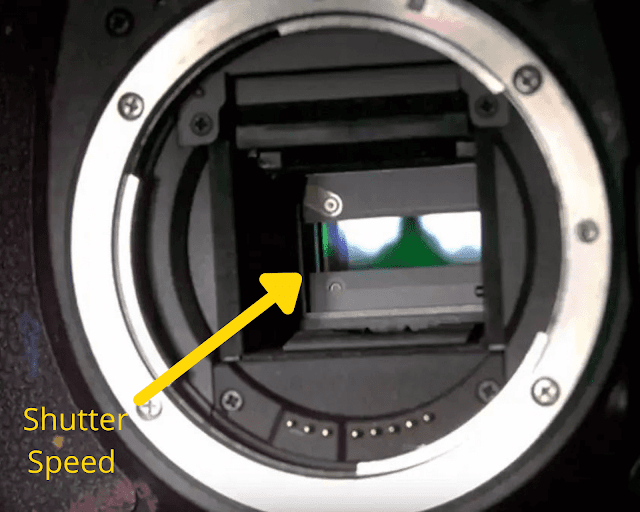



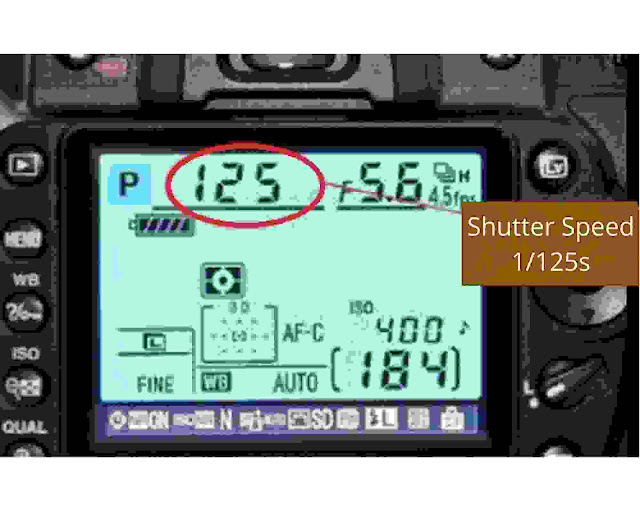
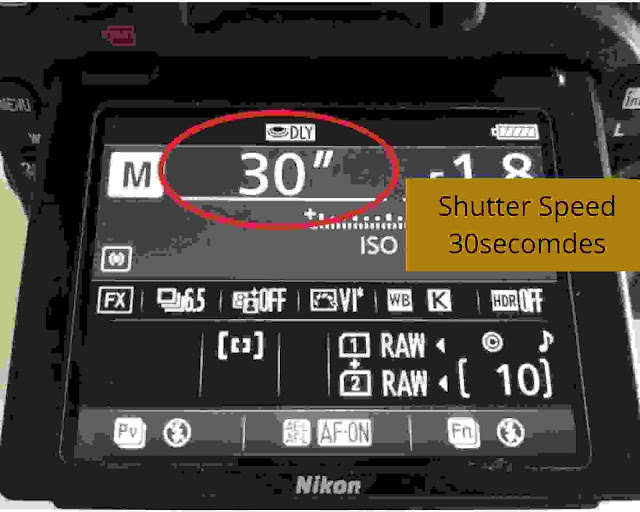

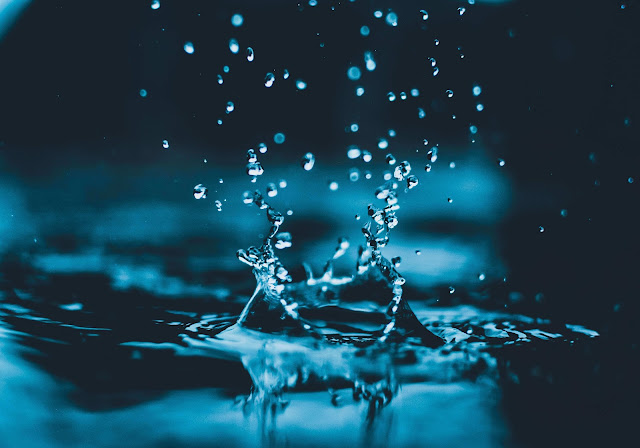

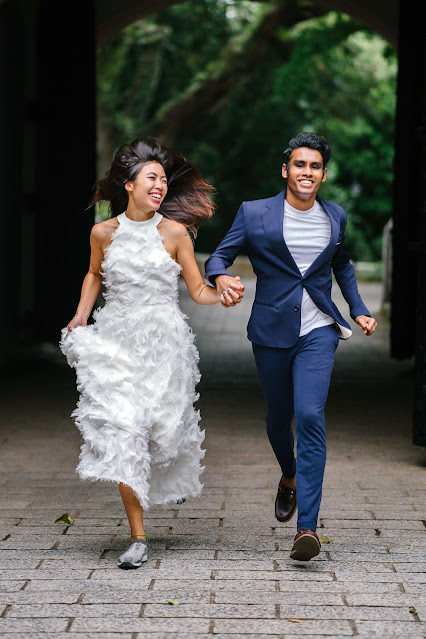


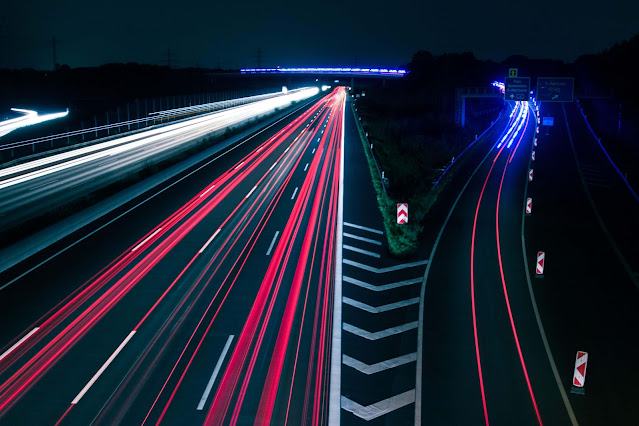
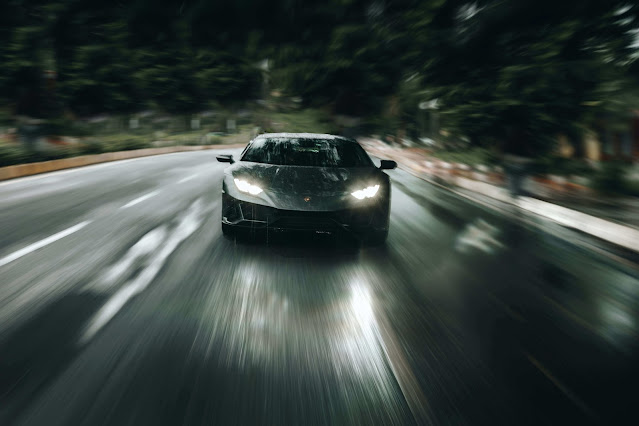


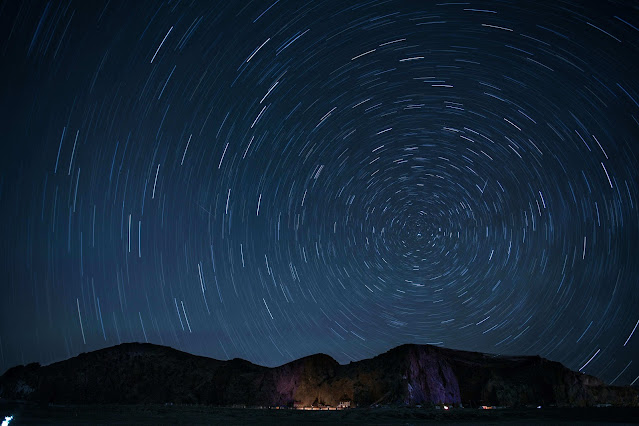
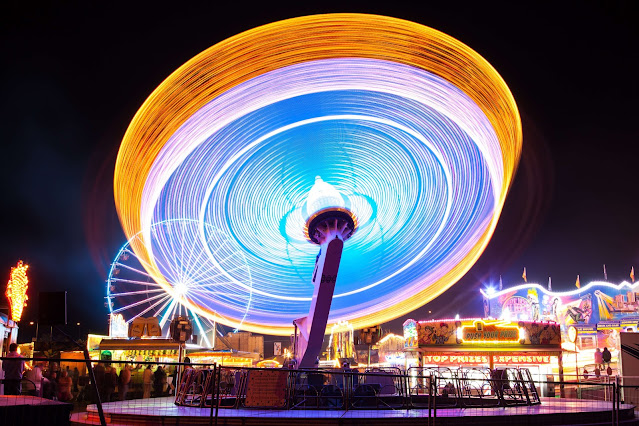
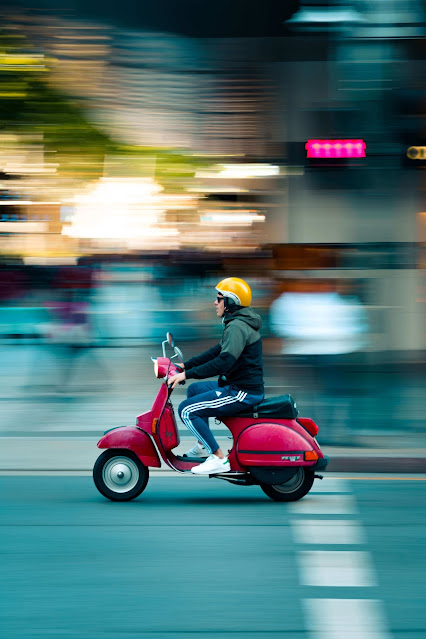



Comments
Post a Comment
We are waiting for your comments and inquiries